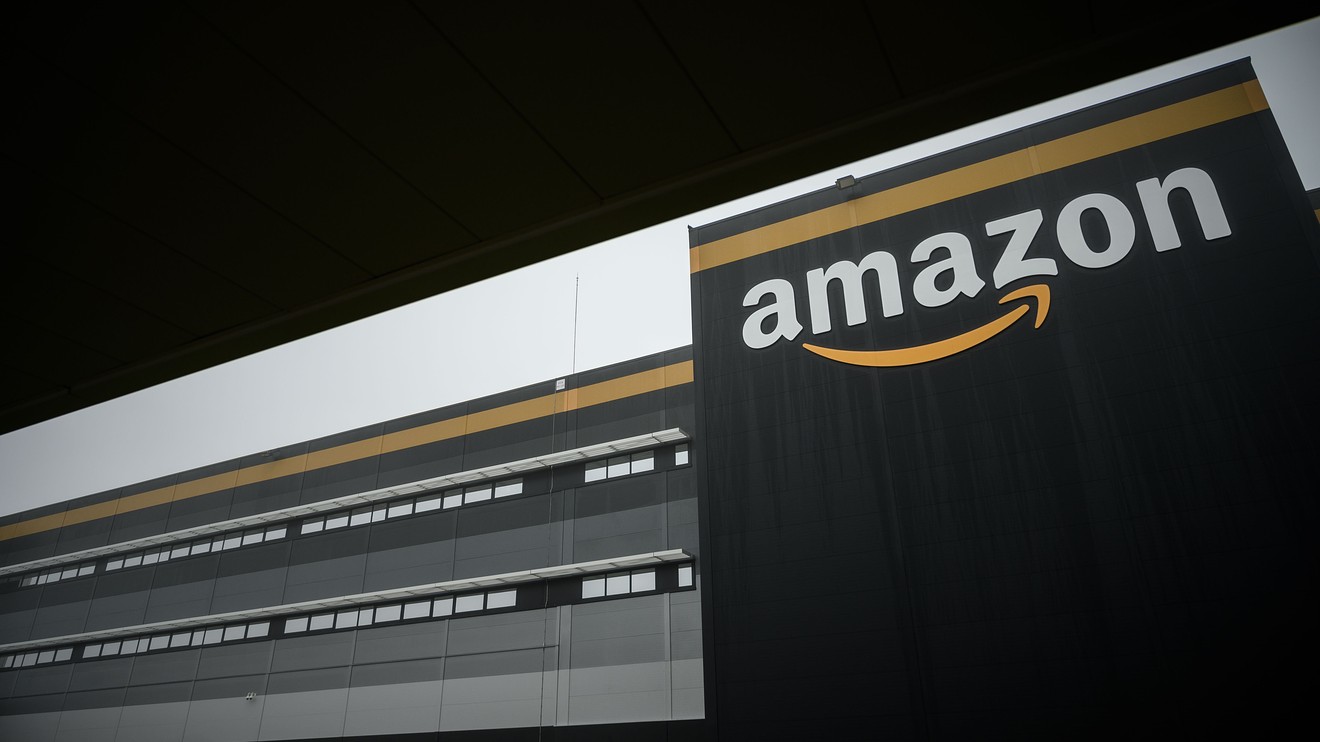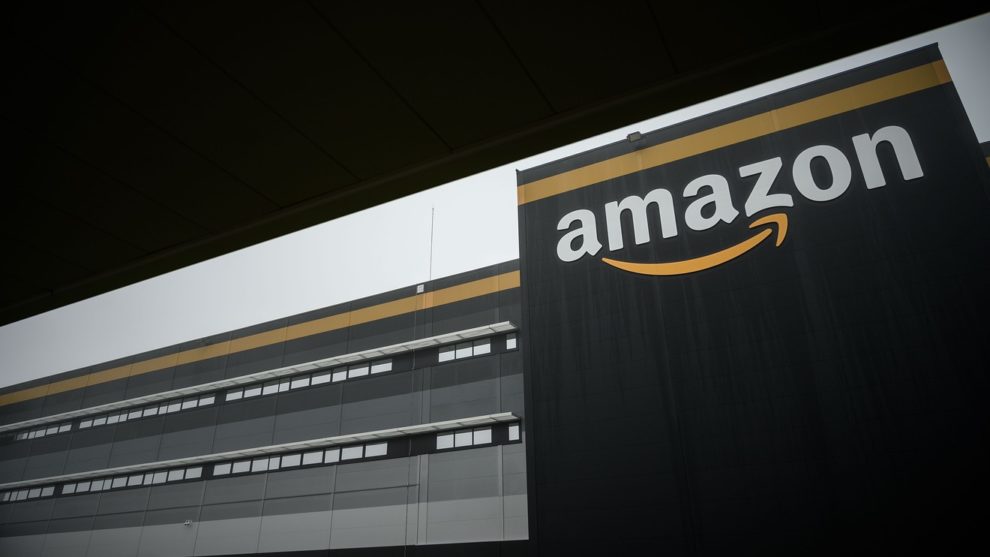
LAS VEGAS — Andy Jassy and his executive team have heard the whispers from Wall Street and not-so-subtle digs from competitors about the future dominance of Amazon Web Services, the $25-billion cloud-computing behemoth that he leads at Amazon.com Inc.
“There are a lot of companies out there that are check-box heroes, who rush out and copy many of our features,” Jassy, the AWS chief executive, said during a keynote speech Tuesday kicking off the company’s annual re:Invent conference here. “But our broader and deeper options in machine learning and data analytics give us an advantage. Customers think we are a couple of years ahead.”
In one particular jab, Jassy showed a slide of a moving truck with Amazon AMZN, +0.64% Prime boxes inside, while an International Business Machines Corp. IBM, +0.99% mainframe and a box labeled Oracle Corp. ORCL, +0.27% languished on a driveway.
Jassy also didn’t mince words criticizing Microsoft Corp. MSFT, +1.21% for raising prices and changing licensing agreements around Windows, which he believes has led to an exodus among enterprise customers to the Linux operating system. Amazon has challenged in court the award of a $10 billion Pentagon cloud contract to Microsoft — the result of what Jassy called a flawed process.
“We have a president who has shown a clear disdain for a company and its CEO,” he said in a press conference Wednesday, referring to President Donald Trump’s public criticisms of Amazon Chief Executive Jeff Bezos, who also owns the Washington Post. Such a dynamic, Jassy said, puts immense pressure on government officials awarding contracts.
“It was not adjudicated fairly, and we believe there was a fair amount of political interference,” Jassy said Wednesday.
See also: Amazon files suit, challenging Pentagon’s $10 billion cloud contract to Microsoft
Such is the political calculus and corporate animus in a global cloud infrastructure market that Forrester Research expects to triple to $133 billion over the next three years. But it is one that Amazon gladly embraces as a first mover to market that is more than willing to build on its lead with a deep roster of technology, from machine learning to edge computing.
Amazon arguably has a six-year head start on rivals Microsoft and Alphabet Inc.’s GOOGL, +0.94% GOOG, +0.94% Google. But the two rivals have managed to start closing the gap with AWS due to changes in the cloud-computing landscape that have led to greater popularity of “hybrid” cloud systems, which mix on-premises hardware and storage with cloud resources, and multi-cloud set-ups that leverage multiple vendors.
During a marathon three-hour presentation, Jassy countered any thoughts that the changes in the cloud market would threaten AWS’s dominance. He drove home Amazon’s deep AWS technology offerings with a flurry of product news and customer testimonials from the likes of Goldman Sachs Group Inc. GS, +3.44% , Verizon Communications Inc. VZ, +0.61% and Cerner Corp. CERN, +0.73% .
See also: How Amazon created AWS and changed technology forever
A series of product announcements highlighted Amazon’s intentions to weave its services more closely with on-premises data centers for hybrid offerings, an area where Microsoft is particularly strong. AWS Outposts, a service that allows Amazon to manage its customers’ on-premises data centers, officially launched Tuesday after it was sneak-peaked at re:Invent a year ago.
An extension of Outposts, AWS Local Zones, puts AWS data centers closer to their customers through local data centers in large metropolitan areas, beginning with Los Angeles. It is unclear, however, how often AWS will add local zones. Previously, AWS customers were connected through geographic regions or availability zones scattered nationwide.
Perhaps the most intriguing service is AWS Wavelength, which will put technology from AWS “at the edge of the 5G network,” or closer to users’ devices via a partnerships with Verizon, Vodafone VOD, -0.11% , KDDI Corp. 9433, +0.29% and SK Telecom Co. SKM, +0.41% .
Taken together, Amazon’s moves symbolizes its embrace of edge computing and acknowledgment to the importance of hybrid-cloud solutions, Adam Burden, chief software engineer at Accenture ACN, +1.35% , told MarketWatch.
Jassy separately told MarketWatch that he could “go across the board” to distinguish its offerings from Microsoft, Google and others. “There’s just not one thing,” he said. “AWS has a lot more functionality” that extends to compute, storage, database, analytics, machine learning, IoT, security and identification-access management, he added.
In a news conference with reporters on Wednesday, Jassy did not rule out the possibility that major cloud vendors might one day work together on collaborative technology. “It’s not impossible but hard to imagine, but first we have to get the fundamentals right,” he said.
As Amazon has piled up the features and customers, Burden and others have seen re:Invent, a conference hosted by AWS for the global cloud computing community, grow from a roundtable with folding chairs eight years ago to 65,000 people swarming The Venetian convention center with a menagerie of DJ platforms, foosball tables, swag booths and a Red Bull Formula 1 car powered by AWS. The emergence of re:Invent as the nation’s premiere cloud event mirrors the dramatic revenue growth of AWS, which started in 2006.
AWS executives told MarketWatch in a series of one-on-one interviews at re:Invent that the ride has been meteoric but not unexpected.
Jassy says he’s “pretty happy” with AWS’s revenue run rate of $36 billion and annual growth of 35%, but it has just scratched the surface as part of a “titanic shift” to the cloud that is still in its early stages. In fact, Amazon Chief Financial Officer Sean Boyle told MarketWatch there is “so much opportunity in front of us.”
“If you look at the trillions of dollars in IT spend, the vast majority will be on-premise (computing),” Boyle said.
“I’m not surprised by our success, but how fast it took place,” AWS Chief Technology Officer Werner Vogels told MarketWatch. The financial crisis of 2008 accelerated the rise of the cloud, he added, because capital wasn’t plentiful enough to afford computing resources, so cloud became a de facto option for startups such as Uber Technologies Inc. UBER, -2.76% , Lyft Inc. LYFT, +0.30% , Spotify Technology SPOT, +1.03% and Dropbox Inc. DBX, +1.16% .











Add Comment